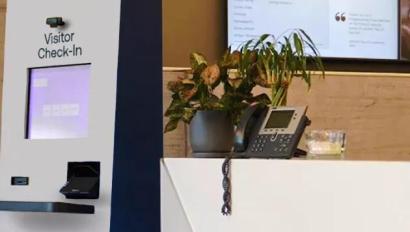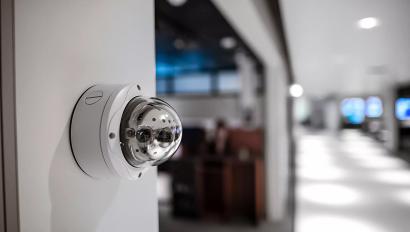From Reactive to Proactive: Building Business Resilience with Your Security Technology

Business resilience is mission critical for leaders, and with climate events, geopolitical tensions, the rising cost of living and the talent crunch all contributing to an increasingly volatile business landscape, facilitating future success is a must.
To forge this resilience, leaders must opt for a more proactive mindset, taking preventative action against risks, and optimizing their business operations. What many leaders may not realize is they already have one of the keys to unlocking this optimization, and it comes from their security technology.
The benefits of modern-day security extend far beyond detecting security risks and addressing them as they appear. Analyzing the data produced by these technologies opens the door to a plethora of insights that can inform strategic business decisions. And businesses are only now beginning to realize the long-term benefits these insights can offer.
To gain these benefits, organizations must shift from detection to prevention – meaning they need to move toward the proactive approach of leveraging security technology to predict and prevent threats, as well as detect them.
Leveraging Security Insights: Unlocking Data
To begin, leaders should look at their existing security infrastructure and work with their security partner to understand the data and insights currently available to them.
For example, security cameras and intrusion detection systems can be analyzed to uncover space utilization and density trends in an office building. Leaders can identify how often, and at what times of day, certain areas of a building are being accessed, and identify behavioral trends in these locations. From here, they can, for example, understand times and areas of heightened security risk and identify opportunities to optimize workflow and energy consumption.
In this way, leaders can better understand where they are operationally efficient, where they should be reallocating budgets and resources, and the areas that need increased focus or attention.
A Proactive Approach Drives Optimization
The real gold mine here comes from a proactive approach to security. Shifting to a preventative mindset not only helps minimize risks and increase profitability, but can further bolster productivity, health and safety, employee satisfaction, customer satisfaction and even sustainability.
This is because a preventative approach helps create an optimized business model in which there are technology and resources in place to help predict – and avoid – potential issues.
The money and resources that would have been put toward mitigating the impact of these threats can then be freed up, and reallocated to be of more value, ultimately with a long-term impact on profitability and satisfaction levels – both for employees and customers.
As artificial intelligence (AI) and machine learning continue to push the boundaries of what’s possible, so too should business leaders be actively looking for ways to adapt to drive optimization for their workplace.
To drive enhanced capabilities for customers, and to boost satisfaction, profitability and productivity, leaders can simply turn to the security camera in the topmost corner of the building, or the access card clipped to their pocket. Security infrastructure contains a treasure trove of insights just waiting to be put to use by the savvy business leader.
As we are only now beginning to scratch the surface for what these technologies can do, this is the time to take action. Leaders should partner with their security provider to better understand how their security technology can help them make informed decisions to ultimately forge business resilience in the long term.
Disclaimer: By using the Blog section of this website (“Blog”), you agree to the terms of this Disclaimer, including but not limited to our terms of use and our privacy policy. The information provided on this Blog is for informational purposes only. Such information is not intended to provide advice on your specific security needs nor to provide legal advice. If you would like to speak to a security representative about your specific security needs, please contact us.























